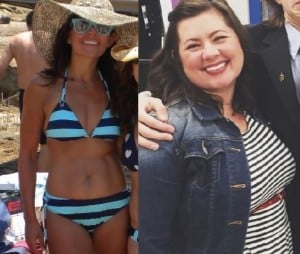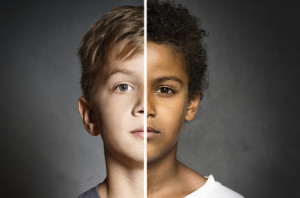So you want to be a feminist, eh?
You want to smash the patriarchy right in the face and dismantle all spheres of oppression in women’s everyday lives? Do you think you’ve got what it takes?
You think you can work on undoing years of sexist, racist, and classist socialization that upholds the dominant cultural hegemony?
Do you think you can challenge your own transphobic, ableist, and homophobic assumptions? You think you have what it takes to be a feminist?
Okay, then let’s do it!
In mainstream discussions of feminism, a lot of the time, feminism will simply be defined as “a movement that aims for a social equality between men and women.”
While feminism encompasses this at a very basic level, there are a lot of concepts and terms that are relevant to feminism that I think are really important to know. Several of these terms I’ve even made entire videos talking about, so I’m going to link to these in the description and have annotations in the video if you want to check those out.
There are a lot of surface-level definitions of patriarchy that you can Google, but I think the simplest and most practical way to define it is using a sociological approach.
Patriarchy: A social system in place in which masculinity is valued over femininity and men are considered dominant to women. It’s important to note that people of all genders are negatively affected by the patriarchy, and it’s not cool. It’s not cool.
Intersectionality: A concept created by black feminists and coined by Kimberlé Crenshaw that describes the way our identities, as well as systems of oppression, overlap.
Feminism has historically excluded marginalized women and situated the issues relevant to privileged women at the center of feminist activism. To avoid this, making our feminism intersectional is absolutely necessary.
Intersectionality acknowledges the way that things like racism, homophobia, transphobia, ableism, etc. can intersect with sexism and disproportionately affect women with marginalized identities.
Trans Inclusivity: Something that definitely needs to be more present in feminism where we actively include trans women in our discussions and safe spaces.
In the past, and unfortunately still today, many feminists have excluded trans women from their spaces and dismissed their gender identities. It’s super important that we create feminist spaces that are safe, inclusive, and respectful to trans women, as well as people who are non-binary and gender-nonconforming.
Privilege: A term used to describe a set of advantages or lack of disadvantages experienced by a dominant group. One of the functions of privilege is that it often obscures the disadvantages of others, and it makes people who are a part of these dominant groups unaware of their privileges.
Also, recognizing that someone holds privilege doesn’t make them a bad person. It just means that they’re not going to experience disadvantages based on certain aspects of their identity.
Gender Roles: A set of social and behavioral norms that are considered appropriate for men and women. They almost always adhere to the gender binary when viewed in Western culture.
Gender Binary: The classification of gender into two distinct and opposite categories of masculine and feminine. This binary excludes people who don’t identify as men or women, such as non-binary, gender fluid, and gender non-conforming individuals. The existence of people who don’t adhere to the gender binary shows that gender is more of a spectrum, rather than a two-category system.
Sex Positivity: An idea within certain types of feminism that views sex as—well—positive. It emphasizes things like sexual freedom, consent, and women’s pleasure. Sex positivity acknowledges that women live in a culture that simultaneously views them as sex objects, but also forces them to repress their sexuality.
Rape Culture: The normalization of sexual assault in society. Literally, this term just describes societies where there’s a high prevalence of rape and sexual assault.
Sexual Harassment: Bullying or coercion of a sexual nature. Sexual harassment is always unwanted and often subtle in nature.
Internalized Sexism: The involuntary internalization of sexist attitudes and beliefs present in society. This is why we see a lot of women embodying sexist attitudes about other women and even themselves, and why we see the existence of “girl hate.”
Bodily Autonomy: The idea that you should have control over your own body. This can encompass reproductive rights, such as access to safe and affordable abortion and birth control, as well as the fight to end sexual violence and rape.
Body Positivity: At its core, it’s the idea that we should love our bodies, whether they be dark, light, thin, fat, abled, or disabled.
Okay, I know that this is only the tip of the iceberg, and there are so many other important terms that deserve to be discussed. However, it’s kind of impossible to fit everything in a single video, so I’m going to ask all of you for suggestions for other terms I didn’t get to talk about that I can put into a future Part Two video.
Anyway, thank you for watching this video. If you enjoyed it, please give it a like and subscribe to this channel for more videos like this one. Also, if you want to help support Feminist Fridays and this channel, then please consider donating to my Patreon page, which will be linked below.




















